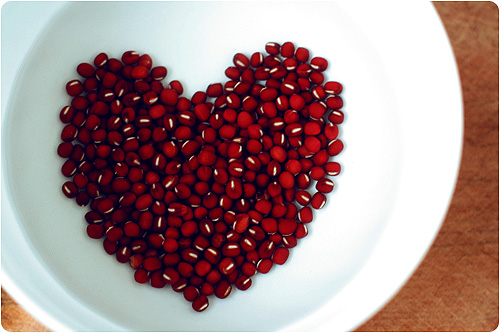Zainab Sarwar has been helping altM readers for years with their diet and wellness. Here’s some advice from her to help us through this difficult time.
Asma: As we are trapped at home, how do we stay focused on eating well? How do we avoid eating excess food out of anxiety?
Zainab: I personally think this is the best time to pause and reflect on your bad eating habits. More than 80% of my clients always used to complain that they don’t have time to make their own food because of their hectic work schedules. But now that you’re forced to stay home all the time, it’s the perfect opportunity to get serious about your diet and keep track of your habits. This is the time you need to train your mind and not only eat but also exercise. You must switch to a healthier lifestyle so that later, when we are back to normal inshaAllah, you can keep your busy life on a healthy track.
Here are a few tips to stay healthy while being quarantined at home:
- Write down your eating schedule:
It is imperative during this time to write down everything you are putting into yourself. Note your meal timings, amount of water intake in measurements of 240 ml/8 oz glasses, amount of caffeine intake in the same measurements, and number of snacks in a day. At the end of the day, you will be able to identify your problem area and gradually work on improving your routine.
- Eat only when hungry:
Now is a great time to train your brain to eat only when you are actually hungry. Your body needs fewer calories when your activities are limited, so the more you eat out of boredom, the more those calories will pile on as extra weight. Eat three proper, main meals: Breakfast, Lunch & Dinner and two snacks throughout the day. Make your breakfast the heaviest meal of the day. By heaviest, I mean to consume the most carbs during your breakfast time and consume the least during dinner time.
- Keep yourself well-hydrated:
Have at least 12 glasses of water in a day to keep yourself away from false hunger pangs.
- Practice Mindful Eating:
Here are some tips to help you practice more mindful eating:
- Don’t eat on the go – it’s difficult to be aware of how much you are eating if you are rushing while eating. Have a seat.
- Resist eating straight from the bag/box. Always try to separate out your portion before eating.
- Remove distractions. Turn off the TV and everything else with a screen, like computers, phones, etc. while eating.
- Take small bites and chew well, while focusing on the smell, taste and texture of the food. Try to get 30 chews out of each bite.
- Try putting your utensils down after each bite. Don’t pick them back up until you’ve swallowed what you already have in your mouth.
- Don’t try to finish the whole plate. If you feel full, pack away the leftovers.
5- Control Your Portion Size:
As a general rule of thumb, use the following guidelines for portion sizes:
Protein: Palm size serving of meat, chicken, or fish or ½–1 cup cooked legumes (lentils/daal).
Oil: 1 teaspoon-1 tablespoon per meal
Rice/Pasta/Quinoa: The amount of carbohydrate you will need depends on your age and activity levels, but as a general rule of thumb, just half to one cup cooked is all we need, especially if weight control is the goal.
Cheese: 1-2 slices of organic cheese depending upon individual statistics.
Bread: If large slices, take 1 slice per meal—otherwise,2 small bread slices/meal.
Vegetables: As a general rule of thumb, 2-3 cups of salad in a day.
Chocolate: 2-3 squares of chocolate. Choose dark where possible.
Dressings/Sauces: Whether it is mayonnaise, tomato sauce, soy sauce or dressing, sauces add extra calories. Limit sauce to just 1-2 teaspoons.
Eggs: 1-2 full eggs or egg whites.
Nuts: 1 oz.
Dairy: 1 cup of liquid dairy and 1-2 cups of other types of dairy such as yogurt & cottage cheese.
Fruits: 2-3 portions of fruit in a day or ¼ cup dried fruit.
These are all the general guidelines to follow if you want to maintain your current weight. If you want to lose weight, then portion sizes vary according to an individual’s body statistics, current lifestyle and health issues.
Limit Sugar Intake:
If you crave something sweet, fresh fruit should always be the priority. Frozen fruits, canned fruits in juice rather than syrup, and dried fruits with no added sugar are also good options. When other dessert options are chosen, ensure that they are low in sugar and consume small portions. Watch out for low fat options, as these are often high in added sugars. Limit the amount of sugar or honey added to foods and avoid sweetening your beverages.
Limit Fat Intake:
To achieve this, opt for cooking methods that require less or no fat, such as steaming, grilling or sautéing instead of frying foods. If needed, use small amounts of unsaturated oils like olive or sunflower oil to cook foods. Prioritize foods that contain healthy sources of unsaturated fats, such as fish and nuts. To limit saturated fats, trim excess fat from meat and poultry and choose skinless options. Reduce your intake of red and fatty meats, butter and full-fat dairy products, palm oil, coconut oil, solid shortening.
Avoid trans fats as much as possible. Read nutrition labels to ensure that hydrogenated oils are not listed in the ingredients. If food labels are not available, avoid foods that commonly contain trans fats such as processed and fried foods (stuff like doughnuts and baked goods, including biscuits, pie crusts, frozen pizzas, cookies, crackers and margarine). If in doubt, minimally processed foods and ingredients are better choices.
Introduce Intermittent Fasting :
For those who are in the habit of binge eating till late night, it’s right time to introduce intermittent fasting. Start intermittent fasting after having an early dinner around 7pm and only consume green tea, herbal teas or water during that time. 12- 14 hrs of intermittent fasting is a good way to keep yourself away from all the nibbling.
Asma: When we’re stocking up at the grocery store, we always think to buy non-perishable goods because they last longer and keeps us from going to the store frequently. How do we avoid processed carbs and sugar at a time like this? What type of foods do you think we should be buying if we are trying to avoid frequent trips to the grocery store?
Zainab: It’s high time to stock your pantries and fridge strategically.
I recommend healthy staples including:
- Frozen and canned vegetables
- Canned soups — as long as they’re the non-creamy and low-sodium variety, like a tomato-based soup, split pea or lentil
- Whole-wheat pasta, quinoa
- Nuts
- Canned fish
- Frozen chicken
If you really want to have cookies in your pantry, stick to one type. Don’t buy seven varieties of cookies because you’ll end up eating more of each of them.
Watch out for your sodium (salt) intake. It’s used to preserve food and add flavor, and is often added to canned foods to extend shelf life.
Look for low-sodium options when stocking up. If you do have canned goods high in salt, you can rinse items like beans and veggies before using them.
For flavor, consider salt alternatives such as dried herbs like oregano, basil, thyme, and rosemary; spices like pepper, chili powder, turmeric and paprika; or salt-free seasoning blends, including curry powder.
Asma: What type of exercise regimen would you recommend while we are stuck at home?
Zainab: Physical activity benefits both the body and mind. Healthy adults should aim for at least 30 minutes of daily physical activity and at least 1 hour for healthy kids (5-17 years).
Here are some tips for staying physically active during self-isolation or quarantine:
- Take regular breaks from sitting by standing up and stretching or going for a quick walk if permitted.
- Leslie walk at home in the intervals of 10 mins three times a day.
- Follow an online exercise class.
- Think outside the box: activities like dancing, playing active videogames, cleaning the house or playing with your kids all count as physical activity!
Asma: How do we keep our kids from eating junk food when they are home and don’t have as many activities and distractions?
The social distancing associated with the COVID-19 outbreak has meant that many families are spending more time at home, which provides new opportunities to share meals together. Family meals are an important opportunity for parents to be role models for healthy eating, and for strengthening family relationships.
Increased time at home during this period may also present new opportunities to involve children in cooking healthy foods, which can help them acquire important life skills that they can carry into adulthood. Letting children choose which vegetables to include in your meal may encourage them to eat them at the table. When involving children in cooking, it is important to keep meals simple and to teach children about proper food safety (including hand washing, cleaning surfaces and avoiding consumption of certain raw ingredients).
SAMPLE MEAL FOR KIDS:
Breakfast:
It should ideally consist of eggs, cheddar cheese slices, Fresh juices, yogurt, English muffin, oatmeal with fruits.
Morning Snack:
Healthy smoothies such as strawberry dream smoothie or kids protein smoothie.
Kids Protein Smoothie:
Ingredients:
- ½ cup Milk
- ½ cup vanilla Greek yogurt
- ½ cup frozen spinach
- ½ frozen banana
- 1 tbsp honey
Blend all and serve cold.
Lunch: Regular home cooked meals.
Evening Snack: Baked or air-fried fries or 2-3 cookies or a fancy fruit salad for kids
Dinner: Home cooked pasta, Tortilla rolls, Spicy chicken sloppy Joes, pizza bread , home-made chicken burger.
Again, now is the time to enforce good eating habits in your children. Your children need fewer calories as compared to their school days because of limited physical activities, so even if they stay hungry for a few hours and throw tantrums about available food options at home, don’t surrender to them. Create awareness and discipline kids around their bad eating habits.
Also, in order to keep your children physically active, engage them in housing cleaning chores. Activities like dancing and playing active videogames all count as physical activity.
If you have questions for Zainab, please send them to altM at asmauddin@gmail.com. We will feature them in our next Q/A with her.
If you’d like to reach out to Zainab, you can find her on WhatsApp at +971 52 986 5868 or via email at xainabsarwar@live.com
















